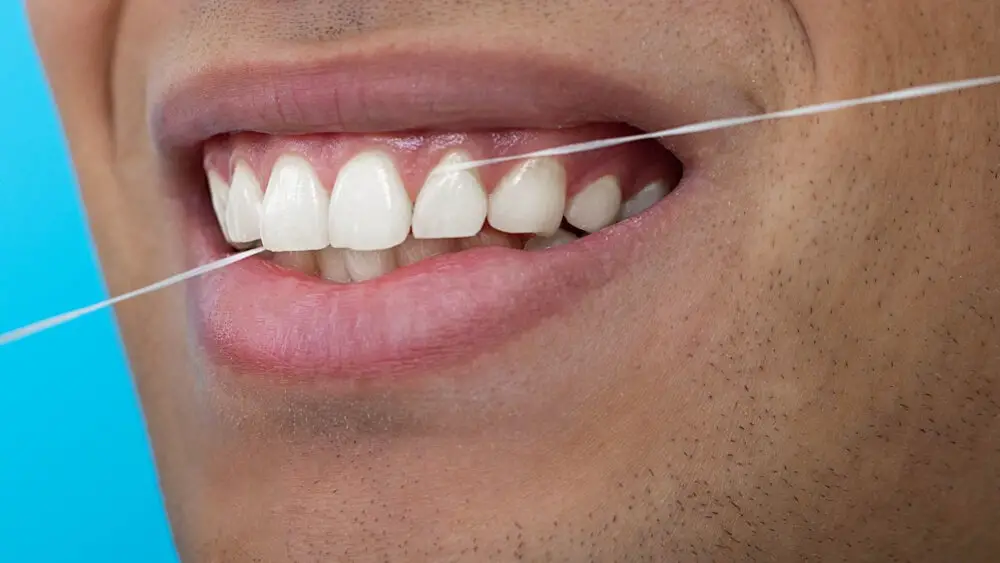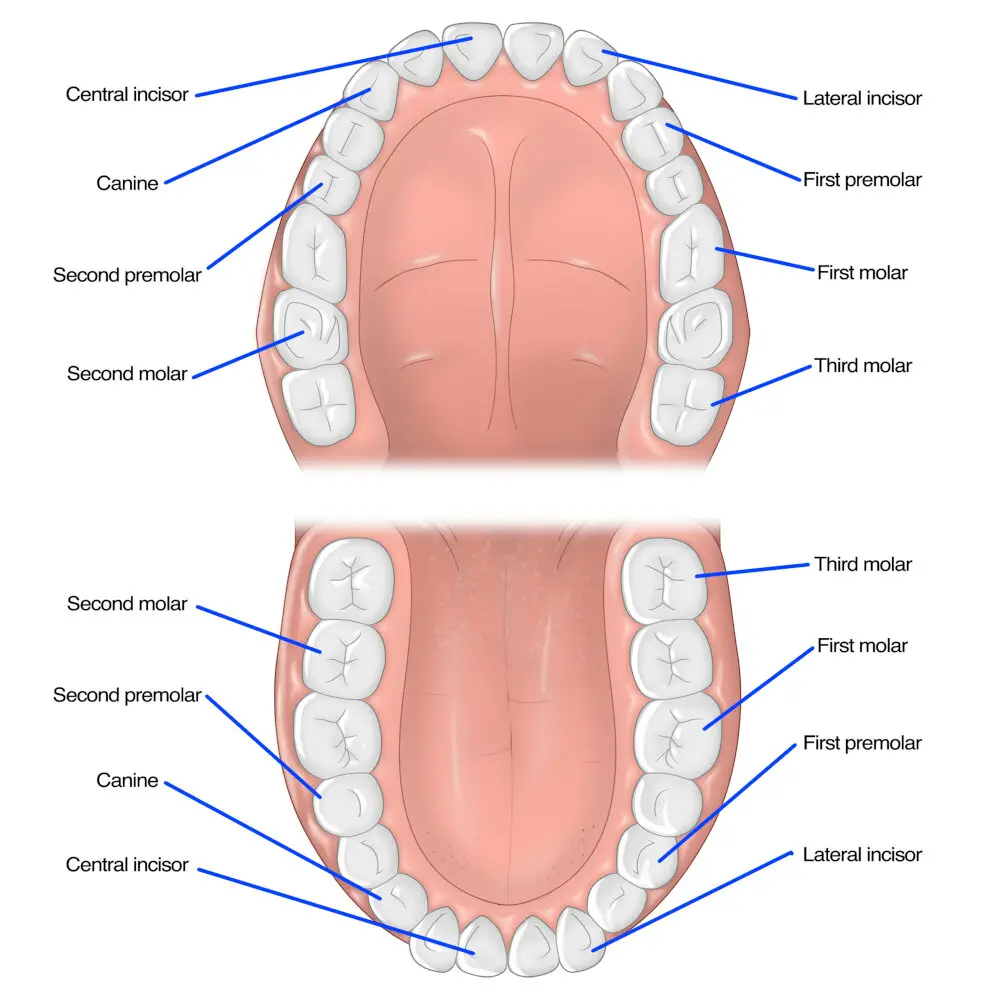The Surprising Answer: Which Animal Has the Most Teeth?

When it comes to animals, there are some fascinating facts that always seem to pique our curiosity. One of the most interesting questions that people often wonder about is which animal has the most teeth? Teeth have always been an essential part of an animal’s anatomy, as they help them rip, tear, and chew their food. From carnivores to herbivores, every animal has a unique set of teeth that are designed to suit their dietary needs. So, which animal holds the record for having the most teeth? The answer might surprise you!While humans have an average of 32 teeth, some animals have a lot more. Sharks, for instance, have multiple rows of teeth that they can replace throughout their lifetime, with some species having up to 50,000 teeth in their lifetime. However, sharks do not hold the title for having the most teeth. In fact, the animal with the most teeth is a small and unassuming creature that lives in the deep waters of the world’s oceans. Keep reading to find out which animal has the most teeth and what makes their teeth so unique.
Have you ever wondered which animal has the most teeth? The answer might surprise you. While some animals, such as sharks and crocodiles, have a reputation for having a large number of teeth, the animal with the most teeth is actually the Snail. Yes, that’s right, the humble snail has the most teeth of any animal on Earth. These tiny creatures can have up to 25,000 teeth, arranged in rows on their tongues, which they use to grind up their food. This may seem like a lot of teeth for such a small animal, but it’s actually an essential adaptation that has helped snails survive for millions of years. So next time you come across a snail, take a moment to appreciate just how impressive their dental anatomy really is.
Knowing which animal has the most teeth may seem like a trivial fact, but it can actually provide valuable insights into the biology and behavior of different species. For example, the fact that the snail has the most teeth may surprise many people, but it makes sense when you consider that snails use their teeth to rasp away at food. Similarly, learning about the different types of teeth that animals have, such as the sharp, serrated teeth of a shark or the flat molars of a herbivorous animal, can tell us a lot about their diets and hunting behaviors. Whether you are a biologist, animal enthusiast, or simply curious, understanding which animal has the most teeth can open up a fascinating world of scientific exploration and discovery.
Animals with the most teeth

When it comes to animals with the most teeth, the answer may surprise you. While sharks and crocodiles are commonly associated with a mouthful of teeth, the animal with the most teeth is actually a snail. The marine cone snail has an astonishing 10,000 teeth located on a ribbon-like structure called a radula. These tiny teeth are used to harpoon their prey, injecting them with venom. Another animal with a surprisingly high number of teeth is the common garden snail. While not as impressive as the marine cone snail, the garden snail can have anywhere from 1,000 to 12,000 teeth. These tiny, sharp teeth are located on their tongue-like organ called a radula and are used to scrape and grind their food. It’s amazing to think that such small creatures can have so many teeth, but it just goes to show that the animal kingdom is full of surprises.
Research and data on animals with the most teeth have shown that the answer to this intriguing question might not be as straightforward as one might think. While many people might assume that sharks or crocodiles would top the list, the reality is far more surprising. In fact, the animal with the most teeth is the humble snail, with some species boasting up to 20,000 tiny teeth. This remarkable fact is a testament to the incredible diversity of the animal kingdom and highlights the importance of continued research and exploration into the natural world. By studying and learning about the amazing creatures that inhabit our planet, we can gain a greater appreciation for the complexity and beauty of life on Earth.
The number of teeth in different animals varies greatly, depending on their diet, habitat, and lifestyle. For instance, herbivores like elephants and cows have a large number of molars to help them grind and chew tough plant material. In contrast, carnivores like tigers and lions have sharp, pointed teeth to help them tear and slice meat. Some animals, like sharks, have multiple rows of teeth that continually replace lost or damaged ones. Interestingly, the animal with the most teeth is not a shark, but a snail! The marine cone snail has hundreds of tiny, harpoon-like teeth that it uses to inject venom into its prey. This surprising fact highlights the incredible diversity of teeth in the animal kingdom and the adaptations that have evolved to help different species survive.
Teeth are an essential part of the anatomy of animals. These structures are primarily designed to break down food into smaller pieces, which can be easily consumed and digested. The teeth of carnivorous animals are pointed and sharp, allowing them to tear through flesh and bone. On the other hand, the teeth of herbivorous animals are flat and broad, which helps them grind and crush plant matter. Some animals, such as rodents, have constantly growing teeth that need to be worn down by chewing on hard objects. The number of teeth an animal has varies depending on its species and diet. For instance, the common snail has approximately 14,000 teeth, while the dolphin has 100-250 teeth. Despite the variations in the number and shape of teeth, they all serve a vital function in the survival and well-being of animals.
The winner of the most teeth

The animal kingdom is full of fascinating creatures, each with its own unique set of characteristics. When it comes to teeth, there is one animal that stands out above the rest. That animal is the snail. Yes, you read that correctly. The winner of the most teeth in the animal kingdom belongs to the humble snail. While it may seem surprising that such a small and unassuming creature would have the most teeth, the snail’s dental anatomy is actually quite complex. Most species of snails have rows of tiny, sharp teeth that are arranged in a spiral shape. These teeth are located on the snail’s tongue, which is called a radula. The radula is used to scrape and grind food as the snail eats. Some species of snails can have as many as 25,000 teeth in their radula. This impressive dental structure is just one of the many unique adaptations that allow snails to thrive in their environments.
The animal kingdom is full of surprises and one of the most fascinating is the sheer variety of teeth among its inhabitants. From the sharp fangs of carnivores to the grinding molars of herbivores, each species has evolved a unique set of chompers to suit its dietary needs. But which animal boasts the most teeth? Surprisingly, it’s not the fearsome shark or the mighty elephant, but rather the humble snail. That’s right, the common garden snail has the most teeth of any animal, with a mind-boggling 25,000 teeth located on its tongue-like radula. While these teeth are minuscule in size, they are highly effective at scraping up food and breaking it down for digestion. So next time you spot a snail in your backyard, take a moment to appreciate the impressive dental work happening inside its tiny shell.
The animal with the most teeth may surprise many of us. The common snail, which is a small, slimy, and slow-moving creature, holds the title for having the most teeth. A snail’s mouth contains a ribbon-like band known as a radula, which is covered in thousands of tiny teeth. This unique feature allows the snail to scrape and grind its food, which mainly consists of vegetation. The teeth on a snail’s radula are continuously replaced throughout its life, and some species can have up to 20,000 teeth at any given time. Despite its unassuming appearance, the snail is a fascinating creature with an unexpected characteristic that sets it apart from other animals.
There are various reasons why some animals have a large number of teeth. One reason is that teeth are essential for their survival and help them to perform their specific tasks. For instance, carnivorous animals like lions and tigers need sharp teeth to tear and chew meat, while herbivorous animals like cows and horses use their teeth to grind and chew tough plant fibers. Another reason why some animals have many teeth is due to their unique feeding habits. For example, sharks have multiple rows of teeth that they lose and replace throughout their lifetime because they constantly hunt and eat prey. Additionally, some animals may have a large number of teeth simply because they evolved that way due to genetic traits or environmental adaptations.
Other animals with a high number of teeth

While the great white shark is known for having the most teeth of any animal, there are other creatures with an impressive number of chompers. One of these animals is the common snail. Despite its small size, the common snail can have up to 14,000 teeth. These teeth are located on a ribbon-like structure called the radula, which is used to scrape food into the snail’s mouth. Interestingly, the snail’s teeth are not fixed in its jaw like human teeth but are instead replaced as they wear down. This means that the snail is constantly growing new teeth throughout its life. Another animal with a high number of teeth is the long-snouted spinner dolphin. These dolphins have up to 252 teeth, which is more than any other dolphin species. Their teeth are sharp and pointed, which helps them catch and hold onto their prey, such as fish and squid. Like many other animals with a high number of teeth, spinner dolphins have multiple rows of teeth, which allows them to replace any that are lost or damaged. It’s fascinating to think that while humans only get two sets of teeth in their lifetime, some animals are constantly growing and replacing their teeth to adapt to their environment and diet.
Apart from the crocodile, there are several other animals with a high number of teeth. The piranha, for instance, is a small but dangerous fish with razor-sharp teeth that can strip flesh from bones in seconds. The great white shark, a feared predator of the ocean, has around 50-60 teeth in each of its multiple rows, which it can lose and replace up to 50,000 times during their lifetime. Meanwhile, the common snail may seem harmless, but it has an impressive number of teeth, with some species possessing over 20,000 tiny teeth on their tongue-like radula. These animals may have different purposes for their teeth, but they all have one thing in common: a high number of them.
The reason for having many teeth depends on the animal’s diet and feeding habits. In most cases, animals with many teeth are herbivores that need to grind plant material to extract nutrients efficiently. However, some predators also have many teeth to catch and hold their prey firmly. Additionally, some animals have many teeth as a defense mechanism, such as the venomous snakes that use their fangs to inject toxins into their victims. Overall, having many teeth is a biological adaptation that helps animals survive by enabling them to eat, hunt, and defend themselves effectively. The diversity of teeth shapes, sizes, and numbers across the animal kingdom is a testament to the intricacy and complexity of evolutionary processes.
Implications of having many teeth

Having many teeth can have various implications for different animals. For instance, the number and arrangement of teeth can play a crucial role in the diet, feeding behavior, and survival of certain species. For herbivores, having many teeth is essential for grinding and breaking down tough plant material, while carnivores require sharp teeth to tear flesh. In contrast, omnivores need a combination of both types of teeth to eat a diverse range of food. Therefore, the number and type of teeth can provide insights into the ecological niche and evolutionary adaptations of an animal. Moreover, having many teeth also means having a higher risk of dental problems, such as tooth decay and gum disease. This is particularly true for animals that consume a diet high in sugars or starches, which can lead to the buildup of plaque and bacteria in the mouth. In some cases, dental issues can have severe consequences, such as infections that spread to other parts of the body or difficulty eating, which can lead to malnutrition and starvation. Therefore, maintaining good dental hygiene is essential for animals with many teeth, just as it is for humans. Overall, having many teeth can have both advantages and disadvantages, depending on the animal’s diet and lifestyle, and proper dental care is crucial for long-term health and survival.
The number of teeth an animal has can bring both benefits and disadvantages to its survival. Having many teeth can be an advantage for animals that rely on their teeth for hunting and chewing tough foods. For example, sharks have multiple rows of teeth that are constantly replaced, ensuring their ability to catch prey. Similarly, herbivores like cows and horses rely on their many teeth to grind down tough plant fibers. However, having many teeth can also become a disadvantage if they are overcrowded or prone to dental problems. This can lead to pain, infection, and difficulty chewing or hunting, which can ultimately impact an animal’s survival. Therefore, having many teeth can be a double-edged sword, and it is important to balance their benefits and disadvantages in the context of each animal’s specific needs.
The number of teeth an animal possesses can significantly impact its diet and survival. For instance, herbivores require more teeth than carnivores to grind tough plant fibers effectively. Similarly, omnivores need a combination of sharp teeth for slicing meat and flat molars for grinding plant matter. A high number of teeth can also enable animals to consume a wider variety of food, increasing their chances of survival during times of food scarcity. However, a large number of teeth can come with its own set of challenges, such as the need for frequent replacement due to wear and tear. Overall, the number and type of teeth an animal has are vital adaptations that allow them to thrive in their respective environments.
The animal with the most teeth might not be what you expect. While many might guess sharks or alligators, the animal with the most teeth is actually the humble snail. Some species of snails can have up to 25,000 teeth located on their tongue-like radula. These teeth are arranged in rows and are used to scrape and shred their food. The snail’s teeth are constantly replaced throughout its life, with some species growing new teeth every day. While snails may not be the most majestic or fearsome creature out there, they certainly deserve credit for their impressive dental work.
The importance of teeth in animals cannot be overstated. Teeth are vital for the survival of many creatures, as they are essential for eating, hunting, and defense. They come in a variety of shapes and sizes, from sharp and pointed to flat and broad, depending on the animal’s diet and lifestyle. Teeth are used by herbivores to grind and chew tough plant material, while carnivores use them to rip and tear meat. Some animals such as sharks even have multiple rows of teeth, which they use to replace teeth that are lost during hunting. Without teeth, many animals would struggle to survive in the wild, and their ability to obtain food would be severely compromised.
In conclusion, the discovery of which animal has the most teeth is truly fascinating and surprising. While many people might assume that the largest animals have the most teeth, it turns out that the humble snail takes the crown. With hundreds of tiny teeth lining their radula, these unassuming creatures possess an impressive dental arsenal that helps them to grind up tough plant matter and other food sources. This unexpected answer is a reminder that the natural world is full of incredible and unexpected wonders, and that even the smallest and most unimpressive creatures can hold incredible secrets and surprises.
Conclusion

In conclusion, the animal with the most teeth is not always what one might expect. While sharks and crocodiles are well-known for their numerous teeth, the tiny snail known as the limpet actually holds the record for the most teeth of any animal. With over 25,000 tiny teeth arranged in rows, the limpet is a true dental marvel. It’s fascinating to think that such a small creature could have such an impressive dental structure. This just goes to show that the animal kingdom is full of surprises, and we still have much to learn about the incredible diversity of life on our planet.







